OSHA: Who is Covered?
The government successfully tabled fatal safety hazards and health risks with the introduction of OSHA. They established common-sense standards and enforced the law against those who put workers at risk. But who’s covered by OSHA? Who isn’t covered?

Congress created The Occupational Safety and Health Act (OSHA) of 1970 to assure safe and healthy conditions in the workplace. Part of the act was to establish a national public health agency dedicated to the idea that no worker should have to choose between their life and their job.
The proposed law stated to exist to protect working men and women to the fullest extent of the law by setting and enforcing standards. The creation of OSHA was a historic moment. It's one of the few instances in the history of cooperative national reform.
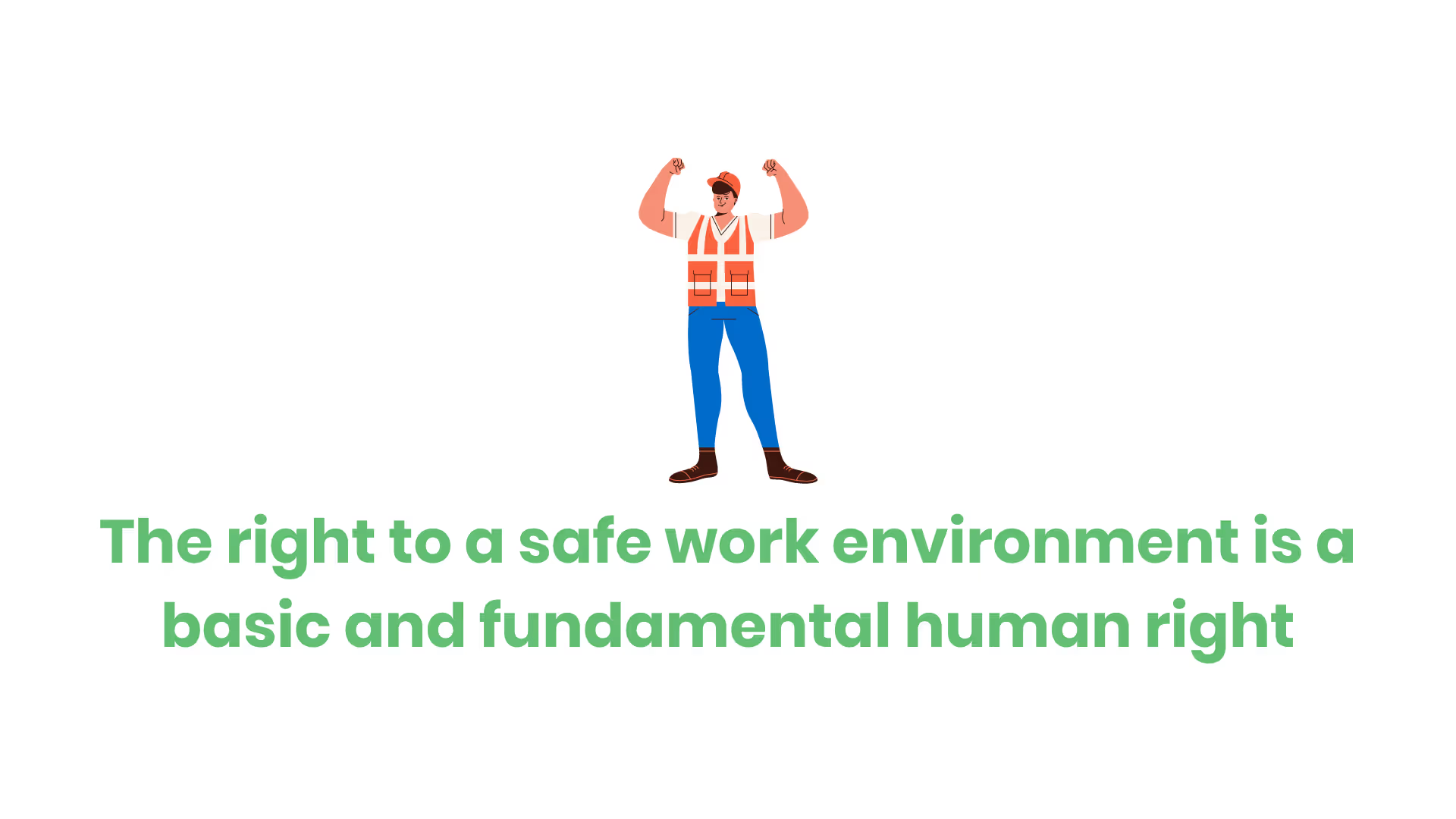
OSHA law makes it clear that the right to a safe work environment is a fundamental human right. The act provides training, outreach, education, and compliance assistance. Under OSHA’s laws and regulations, employers are responsible for providing a safe and healthy workplace for their employees.
Since its creation, workplace injuries, illnesses, and fatalities have dramatically decreased (more on this later). This is a remarkable amount of progress for the U.S.
The government successfully tabled fatal safety hazards and health risks. They established common-sense standards and enforced the law against those who put workers at risk.
But who’s covered by OSHA? Who isn’t covered?
OSHA in Action
In December of 1970, President Nixon signed OSHA into law. Since then, OSHA and its state partners have dramatically improved workplace safety. The government effectively reduced work-related fatalities by almost 63%.
You see, in 1970, an estimated 14,000 workers died while working. That's about 38 people a day!
In comparison, the Bureau of Labor Statistics reports that in 2018, the number fell to about 5,250. That's roughly 14 workers per day.
At the same time, U.S. employment has more than doubled. There are more than 146 million workers employed at more than 10 million worksites.
The rate of reported serious workplace injuries and illnesses has also dropped significantly. There used to be 10.9 injuries and illnesses for every 100 workers in 1972. In 2018, there were only 2.8 for every 100 workers.
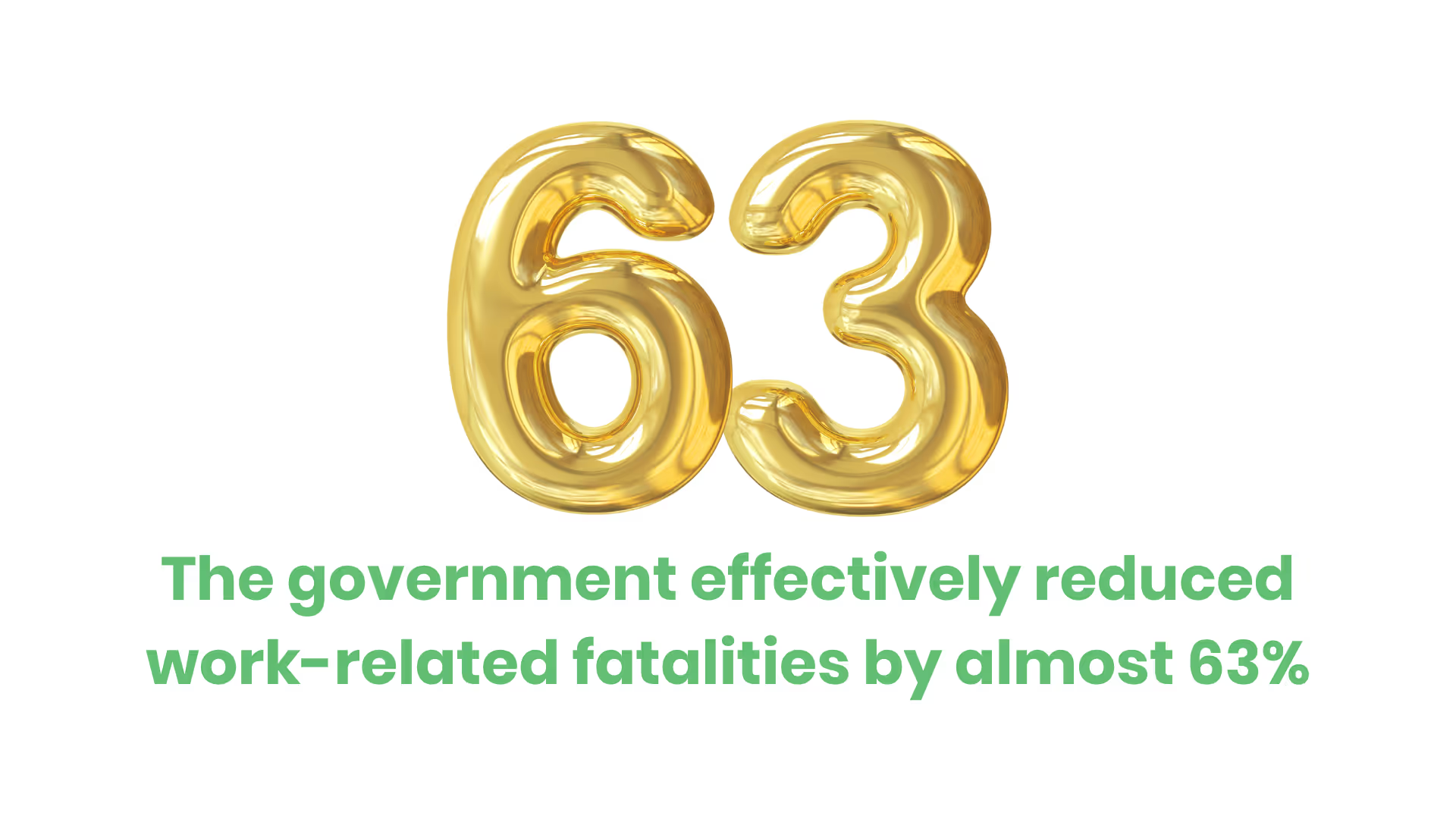
OSHA’s health and safety standards cover aspects of the job site like…
- Asbestos
- Fall protection
- Personally Protective Equipment (PPE)
- Cotton dust
- Trenching
- Machine guarding
- Benzene
- Lead
- Bloodborne pathogens
- Infectious diseases
Thanks to OSHA standards, the laws prevented countless work-related injuries, illnesses, and fatalities.
That said, there are far too many preventable injuries and fatalities. Accidents still happen. Significant hazards and unsafe conditions still exist in workplaces throughout the U.S.
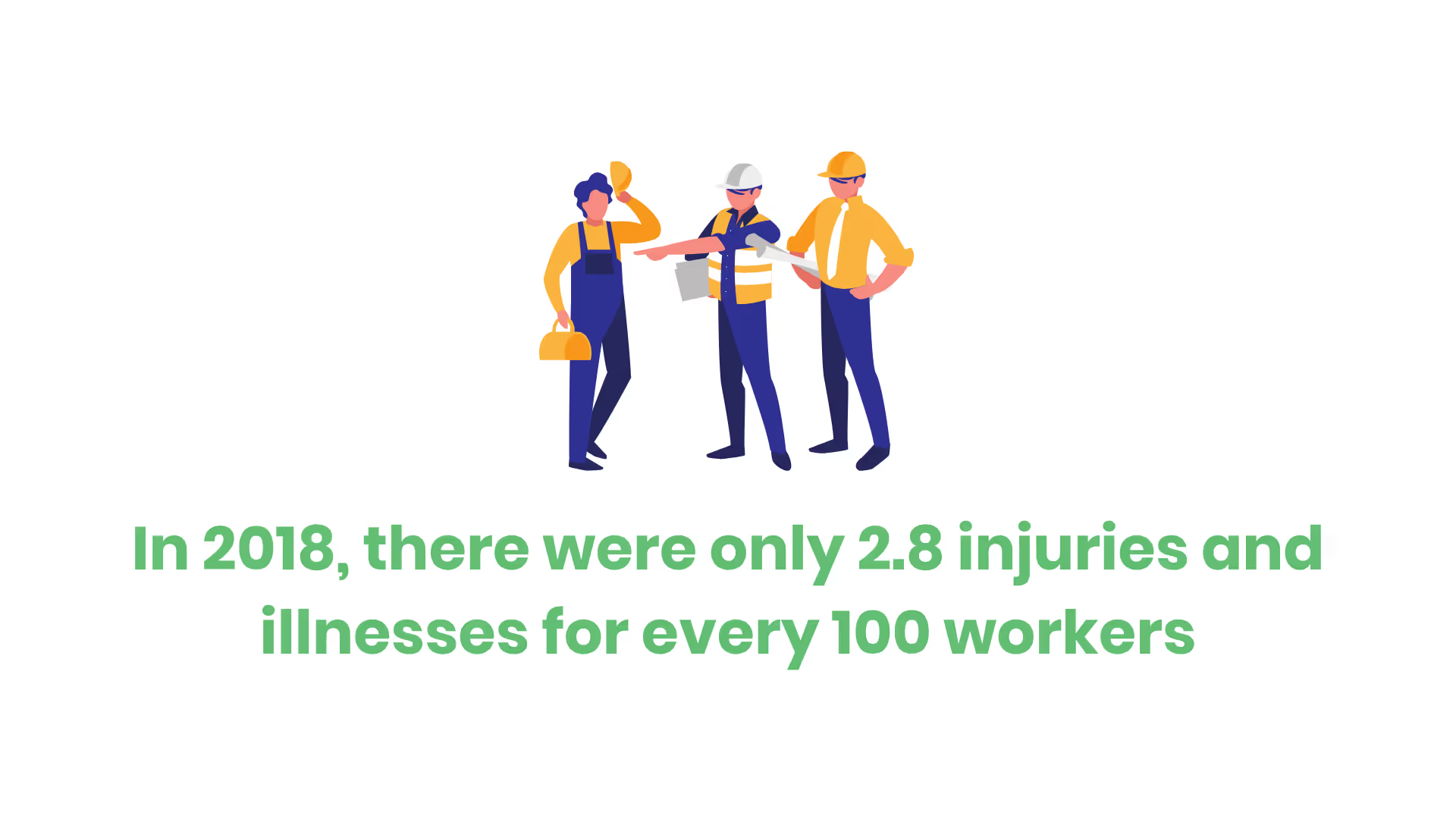
In each of the last few years, more than 3.5 million working men and women suffered a serious job-related injury or illness. Millions of people endure exposure to toxic chemicals that may cause illnesses in the years to come.
Bad working conditions have a direct impact on individual workers. That’s fairly obvious. But it also has a substantial negative impact on the economy.

Occupational injuries and illnesses cost employers more than $97.4 billion in workers' compensation costs alone. Indirect costs include lost productivity, employee training, employee replacement costs, and time for investigations following an injury. With all of these factors added in, the cost of employee injuries can more than double.
Workers and their families suffer both emotional and psychological costs. Not to mention the cost of lost wages and the cost of caring for the injured. These things further weaken the economy.
OSHA Coverage
OSHA covers most private-sector employers and their workers. The law also covers some public sector employers and workers in all 50 states. Some territories and jurisdictions under federal authority also have to abide by OSHA laws.
These jurisdictions include…
- District of Columbia
- Puerto Rico
- Virgin Islands
- American Samoa
- Guam
- Northern Mariana Islands
- Wake Island
- Johnston Island
- Outer Continental Shelf Lands as defined in the Outer Continental Shelf Lands Act
Private Sector Workers
OSHA covers most private-sector employers.
In terms of regions covered, OSHA protects workers in all 50 states, the District of Columbia, and other U.S. jurisdictions that fall under the protection of federal law.
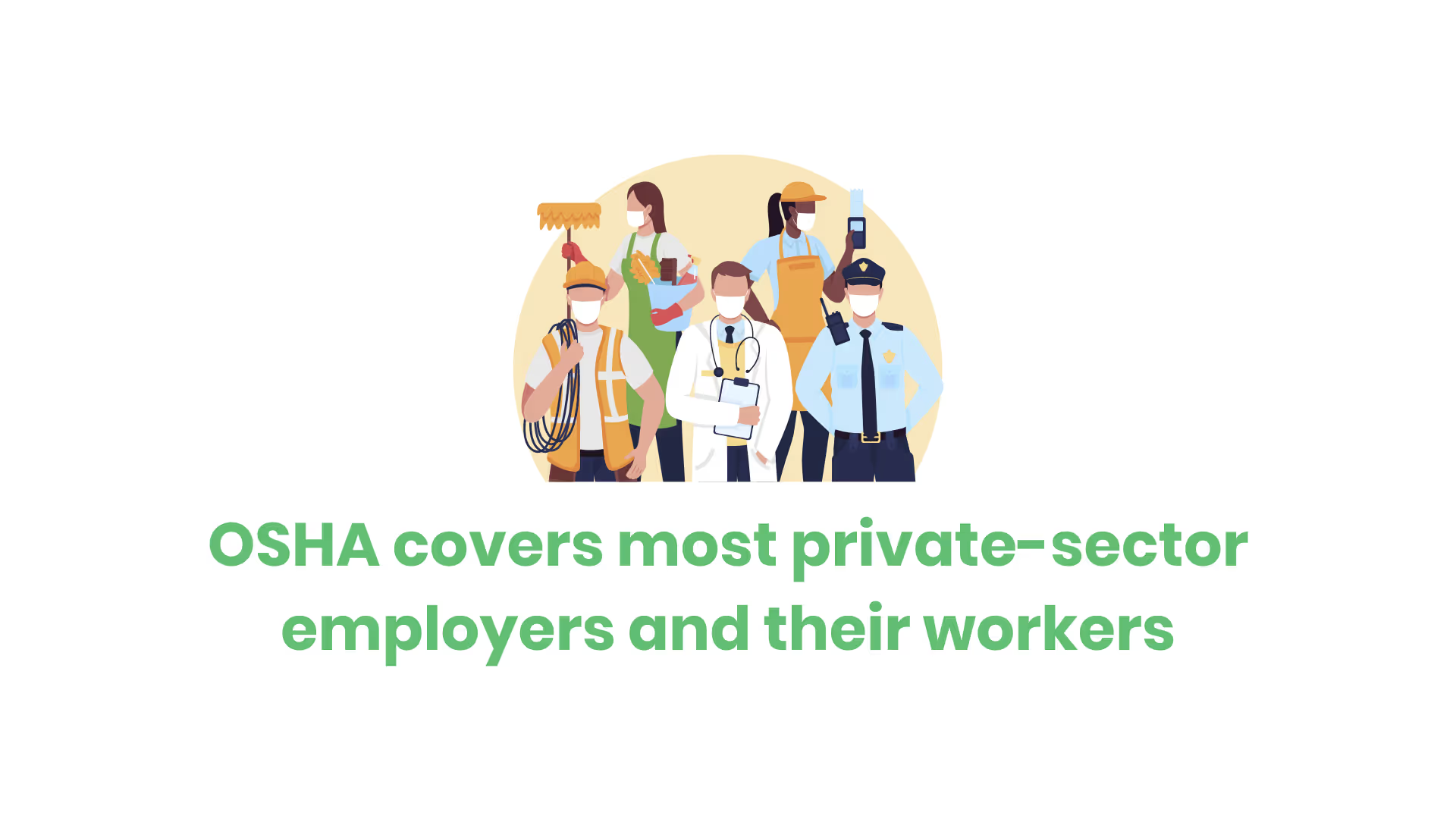
Some states have their own state plans that allow OSHA to protect workers within their borders. State plans are OSHA-approved job safety and health programs. They operate in individual states instead of through federal OSHA.
OSHA encourages states to develop and operate their own job safety and health programs. It precludes state enforcement of OSHA standards unless the state has an approved program.
The organization also approves and monitors all state plans. It provides as much as 50% of the funding for each program.
State-run safety and health programs must be at least as effective as the federal program when it comes to protecting workers’ health and safety.
The following 22 states and territories have OSHA-approved state programs:
- Alaska
- Arizona
- California
- Hawaii
- Indiana
- Iowa
- Kentucky
- Maryland
- Michigan
- Minnesota
- Nevada
- New Mexico
- North Carolina
- Oregon
- Puerto Rico
- South Carolina
- Tennessee
- Utah
- Vermont
- Virginia
- Washington
- Wyoming
Federal OSHA provides coverage to certain workers specifically excluded from a state's plan. For example, those who work in maritime in certain states have coverage. Same thing with those who work on military bases.
Any interested person or group of people, including individual workers, who have a complaint concerning the operation or administration of a state program can submit a complaint to the appropriate administrator. There are recreational offices that process federal OSHA complaints.
This program is the Complaint About State Program Administration (CASPA). The complaint is always kept confidential to protect workers from unwanted retaliation. The OSHA regional administrator investigates each complaint. If they find a complaint to be valid, they may require appropriate corrective action on the part of the state.
State and Local Government Workers
Workers at state and local government agencies aren’t protected by OSHA because it’s a federal program.
However, OSHA does protect them if they work in states that have their own state programs.
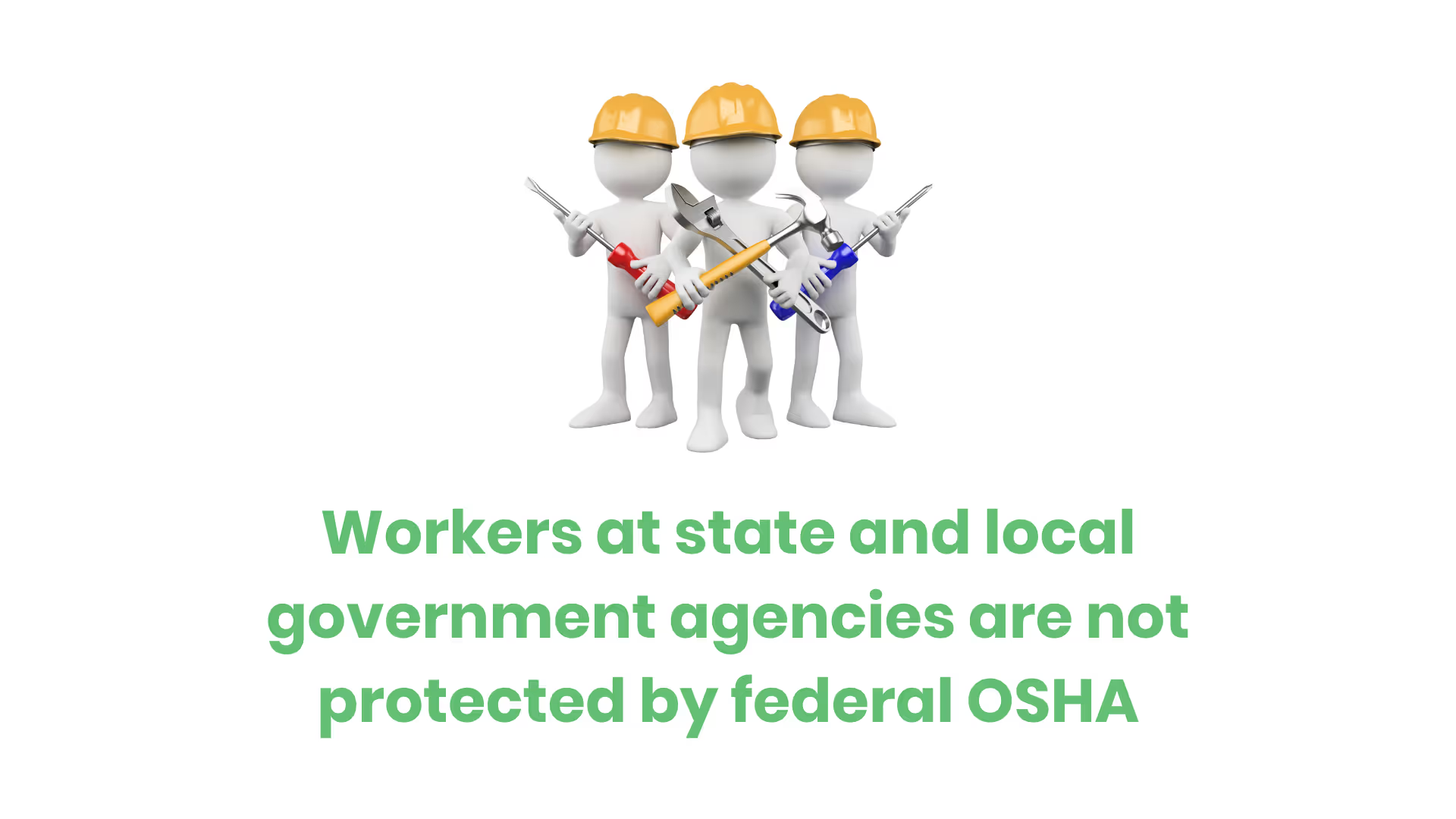
OSHA rules permit states and territories to develop plans that cover only public sector workers. This means that it protects state and local government employees. In these cases, private sector workers and employers remain under federal laws.
Five states and one U.S. territory have OSHA-approved state plans that cover public sector workers.
These places are…
- Connecticut
- New Jersey
- Illinois
- New York
- Maine
- Virgin Islands
Federal Government Workers
OSHA’s protection applies to all federal agencies. Section 19 of OSHA makes federal agency heads responsible for providing safe and healthy working conditions for their employees.
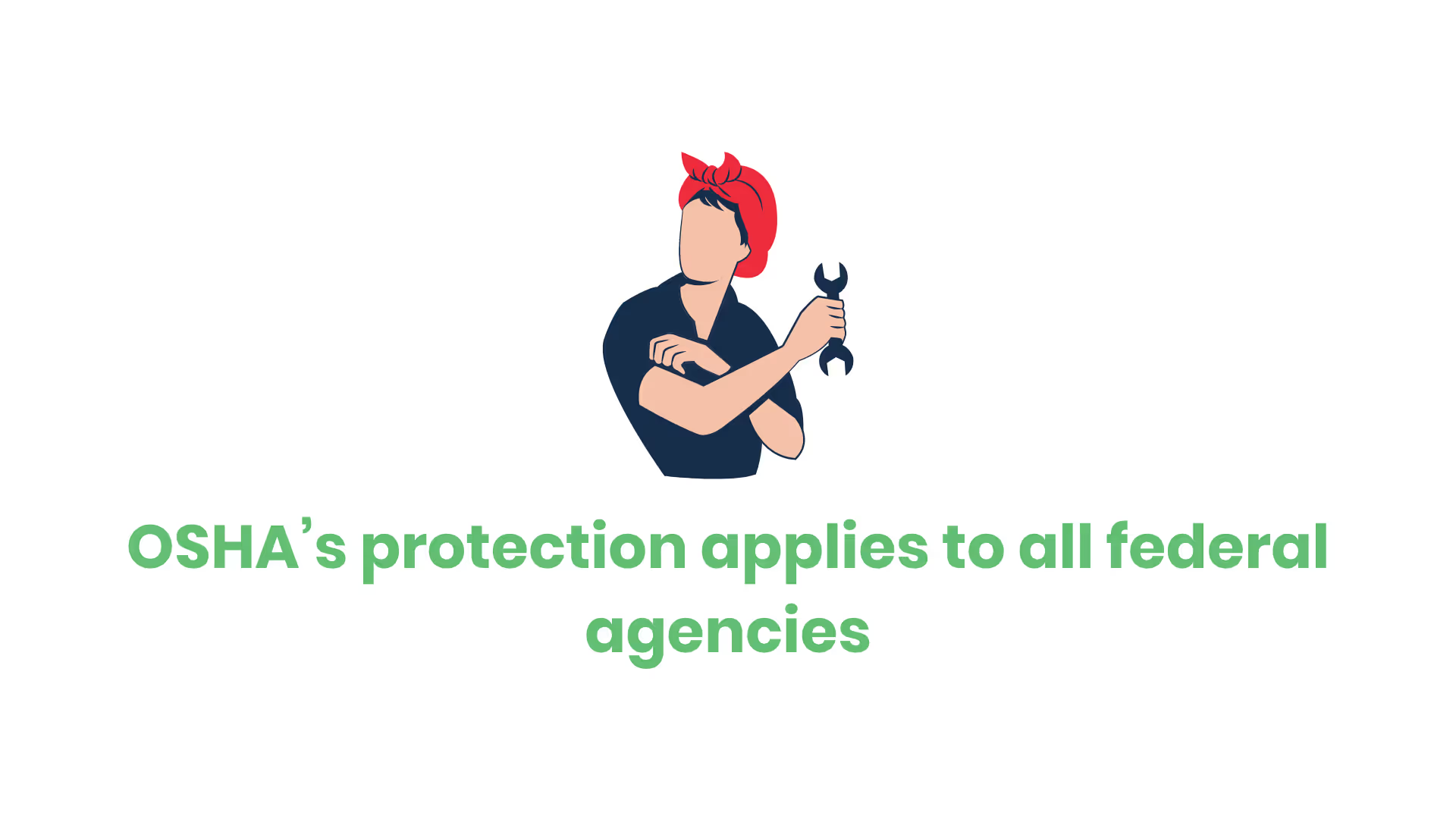
Although OSHA doesn’t impose fines on federal agencies, it does monitor them. OSHA does conduct federal workplace inspections in response to workers reports of hazards.
Federal agencies must have a safety and health program that meets the same standards as private employers. As per a 1998 amendment to the regulations, the Act covers the U.S. postal service the same as any private sector employer.
Not OSHA Covered
Now that you know who OSHA covers, you need to understand who isn’t covered.
Areas of the workforce that aren't covered include…
- Self-employed people
- Immediate family members of farm employers
- Workplace hazards covered by another federal agency
For example, OSHA doesn’t protect miners because of the Mine Safety and Health Administration. It also doesn’t cover the Coast Guard.
The Department of Energy is the entity that protects employees in the energy industry, therefore OSHA doesn’t cover those workers. The same thing is true for the Federal Aviation Administration and the aerospace industry.
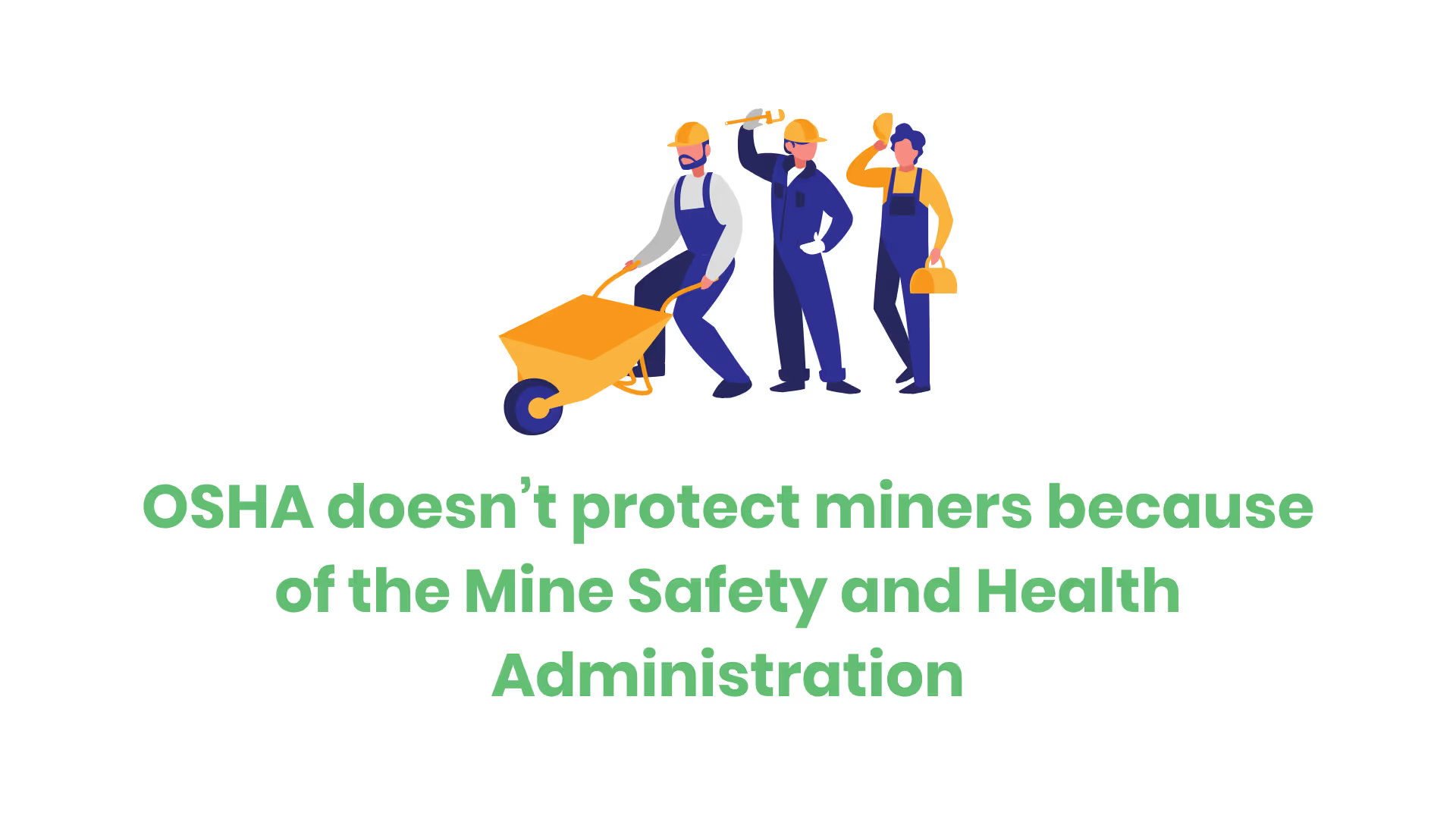
Conclusion
So, who’s covered by OSHA laws and regulations?
Workers and employers in the private sector in every state have some sort of coverage. In other words, OSHA covers more than just construction and blue-collar workers. That’s a common misconception.
OSHA may cover a private employer either directly through federal OSHA programs or through an OSHA-approved state program.
State and local governments also fall under OSHA’s protective reach. These workers are not covered by the federal program, but they do have protections if they work in a state with its own approved program.
Federal government workers have required safety programs that meet the same standards as private employers. OSHA monitors federal agencies but does not impose fines for violations.
When looking to the future, OSHA continues to have a strong commitment to protecting workers from fatal safety hazards in the workplace. They ensure that vulnerable workers in high-risk jobs have access to information and education about job hazards. The laws continue to provide employers with vigorous compliance assistance to promote best practices that save lives.
Although congress’s task is far from complete, the progress they made gives workers all over the country hope and confidence that OSHA will continue to make a lasting difference in their lives.
Emphasize your product's unique features or benefits to differentiate it from competitors
In nec dictum adipiscing pharetra enim etiam scelerisque dolor purus ipsum egestas cursus vulputate arcu egestas ut eu sed mollis consectetur mattis pharetra curabitur et maecenas in mattis fames consectetur ipsum quis risus mauris aliquam ornare nisl purus at ipsum nulla accumsan consectetur vestibulum suspendisse aliquam condimentum scelerisque lacinia pellentesque vestibulum condimentum turpis ligula pharetra dictum sapien facilisis sapien at sagittis et cursus congue.
- Pharetra curabitur et maecenas in mattis fames consectetur ipsum quis risus.
- Justo urna nisi auctor consequat consectetur dolor lectus blandit.
- Eget egestas volutpat lacinia vestibulum vitae mattis hendrerit.
- Ornare elit odio tellus orci bibendum dictum id sem congue enim amet diam.
Incorporate statistics or specific numbers to highlight the effectiveness or popularity of your offering
Convallis pellentesque ullamcorper sapien sed tristique fermentum proin amet quam tincidunt feugiat vitae neque quisque odio ut pellentesque ac mauris eget lectus. Pretium arcu turpis lacus sapien sit at eu sapien duis magna nunc nibh nam non ut nibh ultrices ultrices elementum egestas enim nisl sed cursus pellentesque sit dignissim enim euismod sit et convallis sed pelis viverra quam at nisl sit pharetra enim nisl nec vestibulum posuere in volutpat sed blandit neque risus.

Use time-sensitive language to encourage immediate action, such as "Limited Time Offer
Feugiat vitae neque quisque odio ut pellentesque ac mauris eget lectus. Pretium arcu turpis lacus sapien sit at eu sapien duis magna nunc nibh nam non ut nibh ultrices ultrices elementum egestas enim nisl sed cursus pellentesque sit dignissim enim euismod sit et convallis sed pelis viverra quam at nisl sit pharetra enim nisl nec vestibulum posuere in volutpat sed blandit neque risus.
- Pharetra curabitur et maecenas in mattis fames consectetur ipsum quis risus.
- Justo urna nisi auctor consequat consectetur dolor lectus blandit.
- Eget egestas volutpat lacinia vestibulum vitae mattis hendrerit.
- Ornare elit odio tellus orci bibendum dictum id sem congue enim amet diam.
Address customer pain points directly by showing how your product solves their problems
Feugiat vitae neque quisque odio ut pellentesque ac mauris eget lectus. Pretium arcu turpis lacus sapien sit at eu sapien duis magna nunc nibh nam non ut nibh ultrices ultrices elementum egestas enim nisl sed cursus pellentesque sit dignissim enim euismod sit et convallis sed pelis viverra quam at nisl sit pharetra enim nisl nec vestibulum posuere in volutpat sed blandit neque risus.
Vel etiam vel amet aenean eget in habitasse nunc duis tellus sem turpis risus aliquam ac volutpat tellus eu faucibus ullamcorper.
Tailor titles to your ideal customer segment using phrases like "Designed for Busy Professionals
Sed pretium id nibh id sit felis vitae volutpat volutpat adipiscing at sodales neque lectus mi phasellus commodo at elit suspendisse ornare faucibus lectus purus viverra in nec aliquet commodo et sed sed nisi tempor mi pellentesque arcu viverra pretium duis enim vulputate dignissim etiam ultrices vitae neque urna proin nibh diam turpis augue lacus.




